Abstract
C18:juvenile hormone is quite soluble in water, yielding a monomeric solution greater than 10-5 M. In vivo injection or addition of aqueous juvenile hormone to the hemolymph in vitro shows the complexation of juvenile hormone to a protein, as demonstrated by gel permeation chromatography and disc-gel electrophoresis. The protein has an apparent molecular weight of 3.4 × 104 and is present in the hemolymph at a concentration in the micromolar range. The binding of the hormone to the protein can be described as a simple thermodynamic equilibrium with a dissociation constant of 3 × 10-7 M, and the protein has a much higher affinity for the hormone than for the hydrolysis products.
Keywords: tobacco hornworm, dissociation constant, specificity, esterases, diisopropylphosphofluoridate
Full text
PDF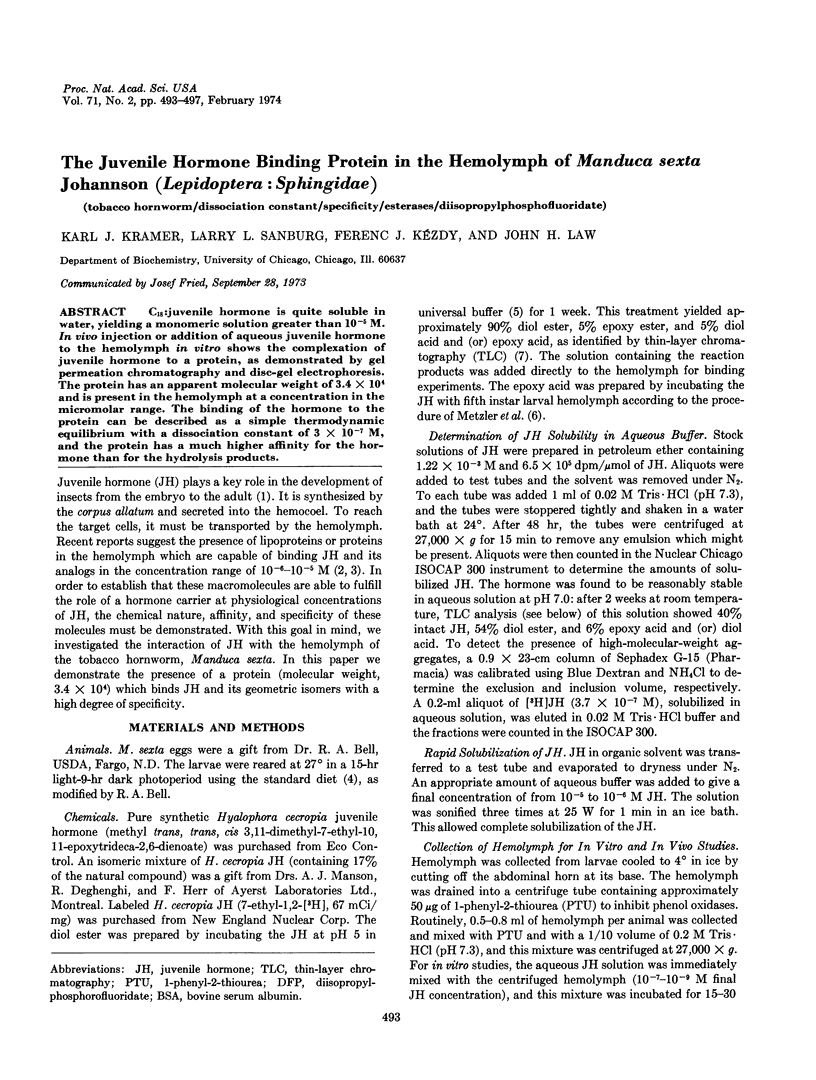
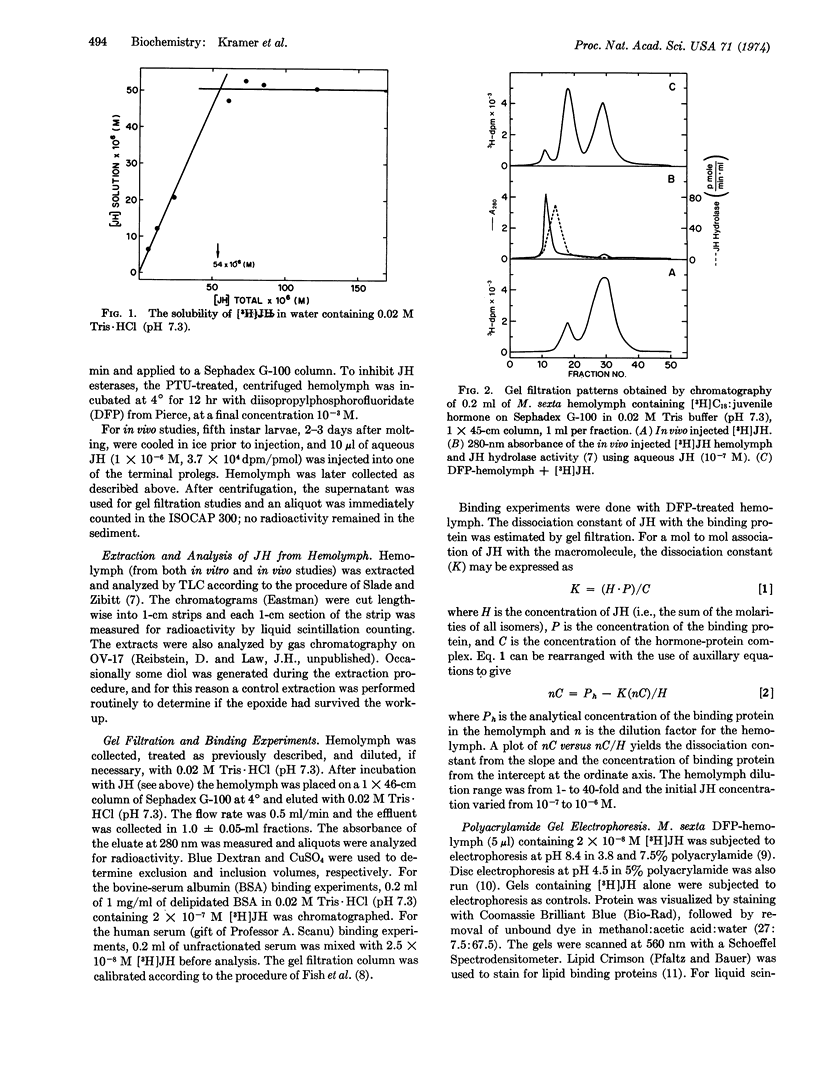
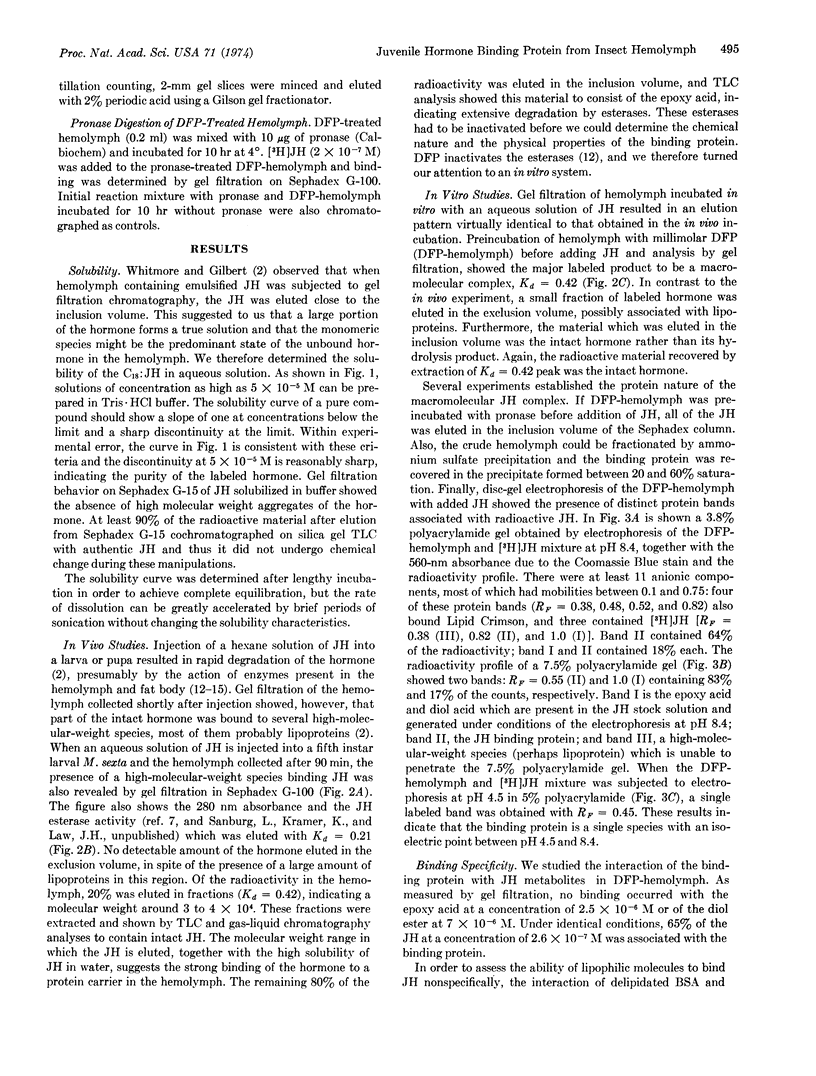
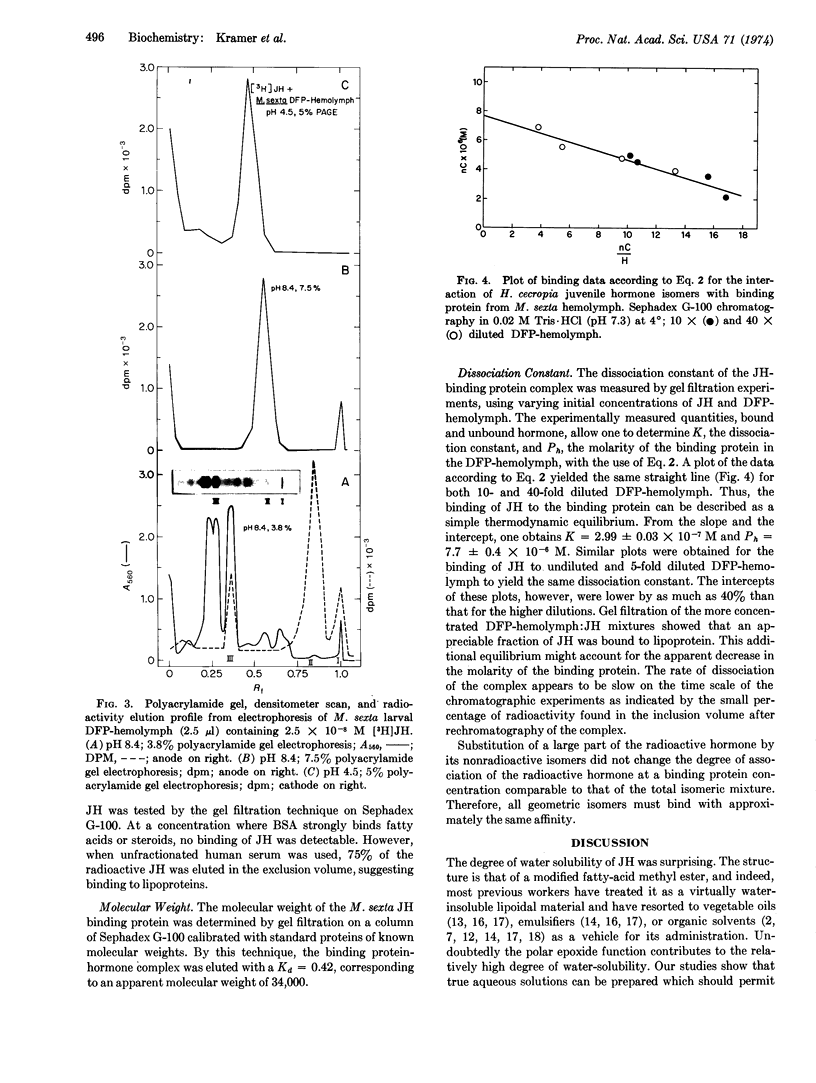
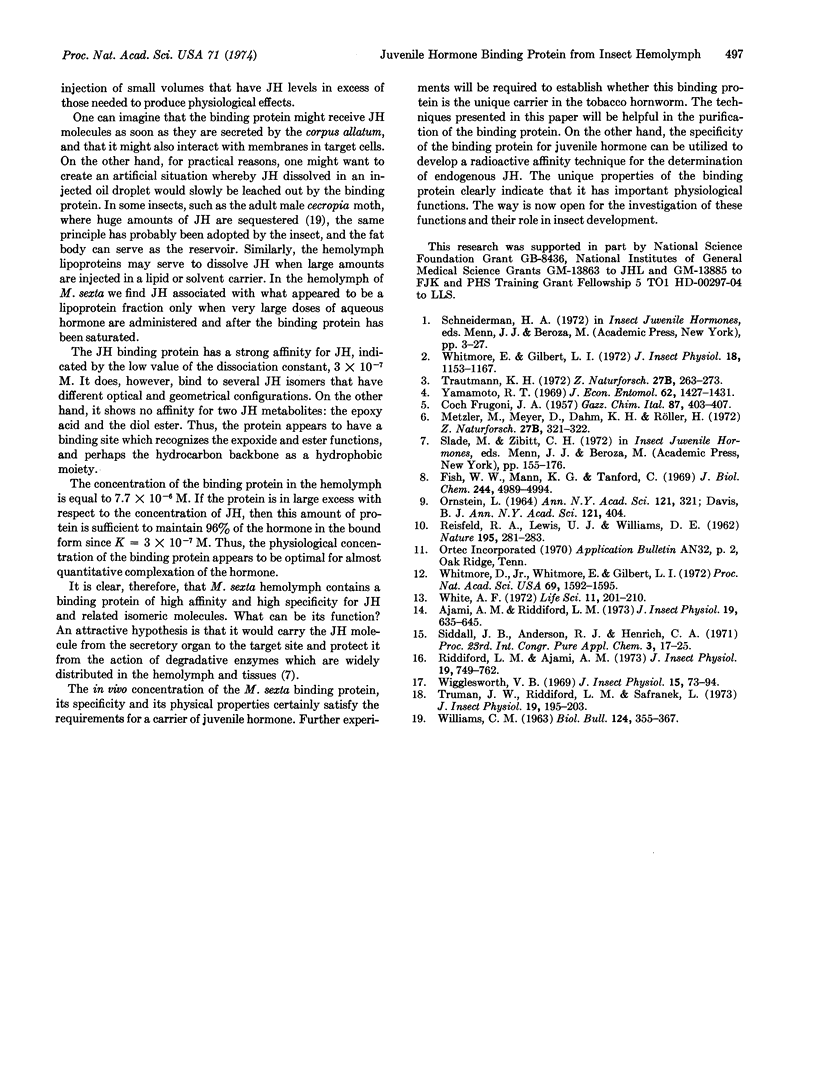
Images in this article
Selected References
These references are in PubMed. This may not be the complete list of references from this article.
- Fish W. W., Mann K. G., Tanford C. The estimation of polypeptide chain molecular weights by gel filtration in 6 M guanidine hydrochloride. J Biol Chem. 1969 Sep 25;244(18):4989–4994. [PubMed] [Google Scholar]
- Metzler M., Meyer D., Dahm K. H., Röller H. Biosynthesis of juvenile hormone from 10-epoxy-7-ethyl-3,11-dimethyl-2,6-tridecadienoic acid in the adult cecropia moth. Z Naturforsch B. 1972 Mar;27(3):321–322. doi: 10.1515/znb-1972-0321. [DOI] [PubMed] [Google Scholar]
- ORNSTEIN L. DISC ELECTROPHORESIS. I. BACKGROUND AND THEORY. Ann N Y Acad Sci. 1964 Dec 28;121:321–349. doi: 10.1111/j.1749-6632.1964.tb14207.x. [DOI] [PubMed] [Google Scholar]
- REISFELD R. A., LEWIS U. J., WILLIAMS D. E. Disk electrophoresis of basic proteins and peptides on polyacrylamide gels. Nature. 1962 Jul 21;195:281–283. doi: 10.1038/195281a0. [DOI] [PubMed] [Google Scholar]
- Trautmann K. H. In Vitro Studium der Trägerproteine von 3 H-markierten juvenilhormonwirksamen Verbindungen in der Hämolymphe von Tenebrio molitor L. Larven. Z Naturforsch B. 1972 Mar;27(3):263–273. doi: 10.1515/znb-1972-0309. [DOI] [PubMed] [Google Scholar]
- Whitmore D., Jr, Whitmore E., Gilbert L. I. Juvenile hormone induction of esterases: a mechanism for the regulation of juvenile hormone titer. Proc Natl Acad Sci U S A. 1972 Jun;69(6):1592–1595. doi: 10.1073/pnas.69.6.1592. [DOI] [PMC free article] [PubMed] [Google Scholar]
- Whitmore E., Gilbert L. I. Haemolymph lipoprotein transport of juvenile hormone. J Insect Physiol. 1972 Jun;18(6):1153–1167. doi: 10.1016/0022-1910(72)90149-7. [DOI] [PubMed] [Google Scholar]



